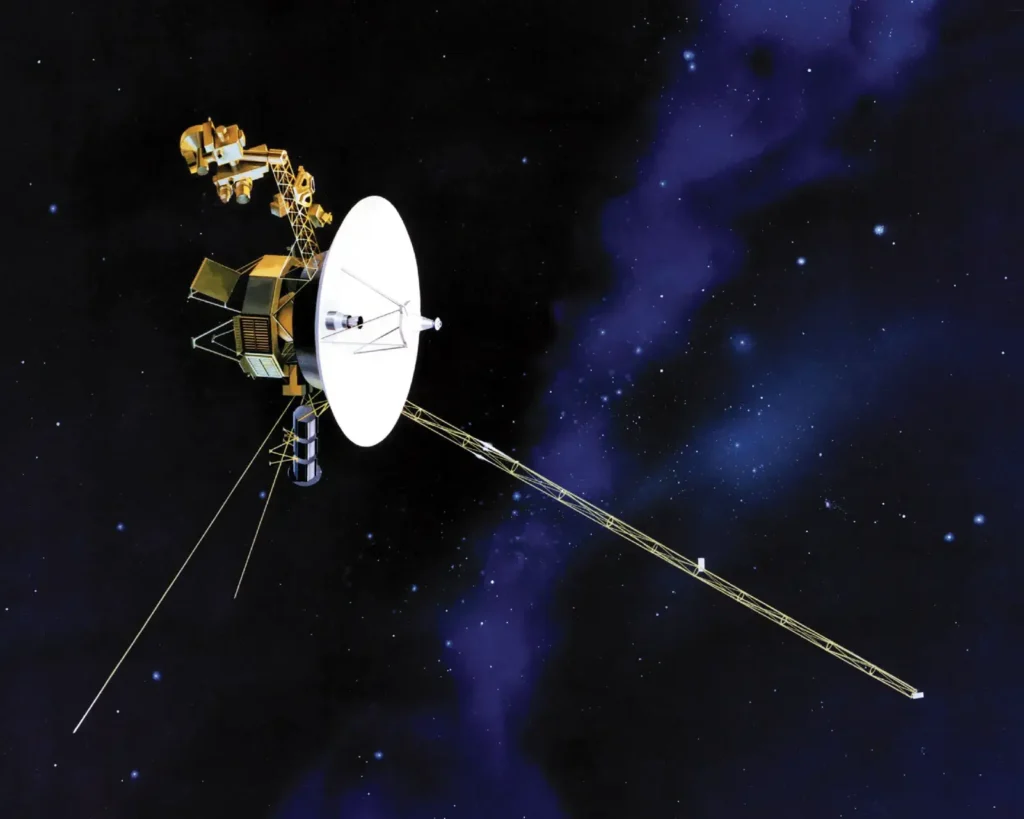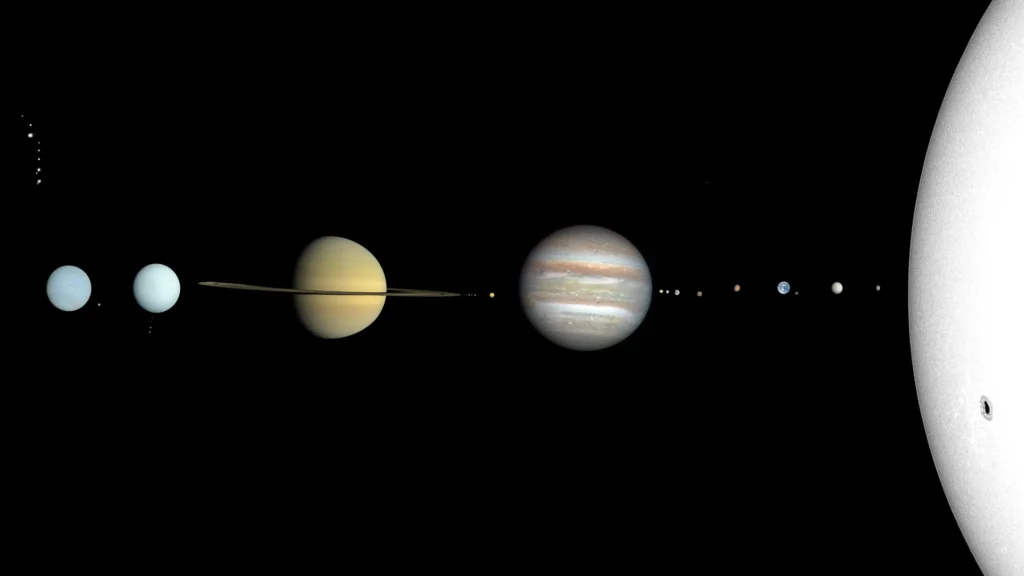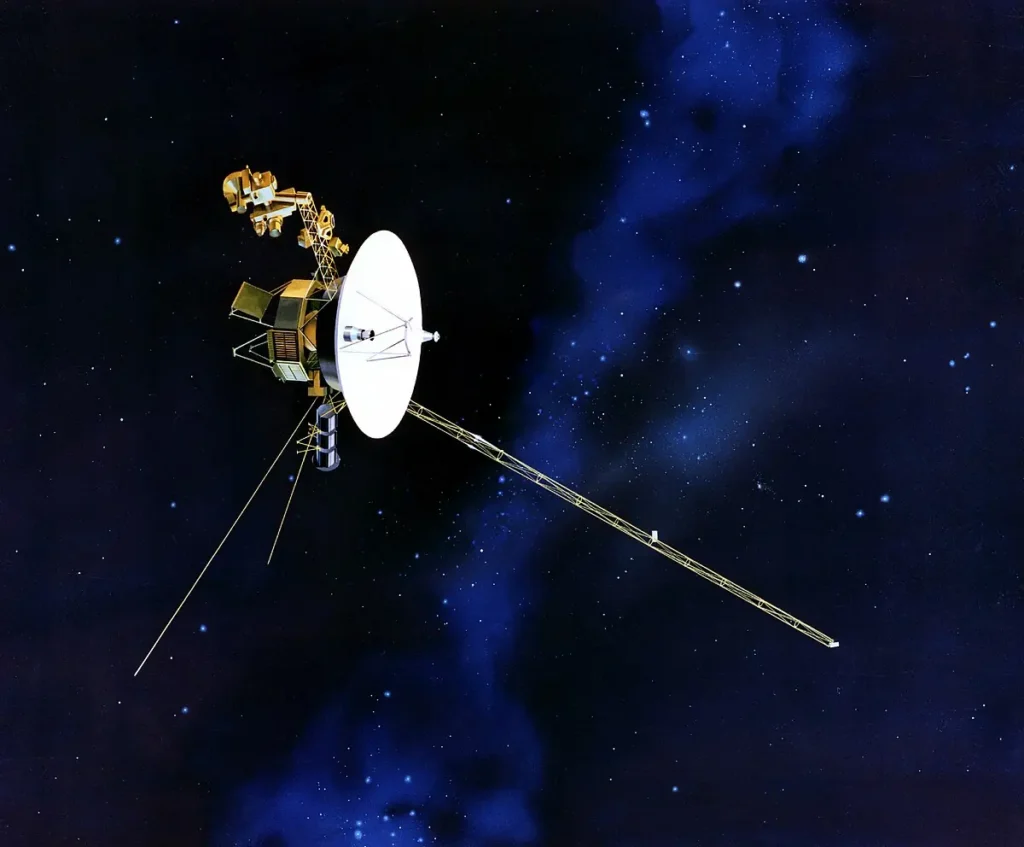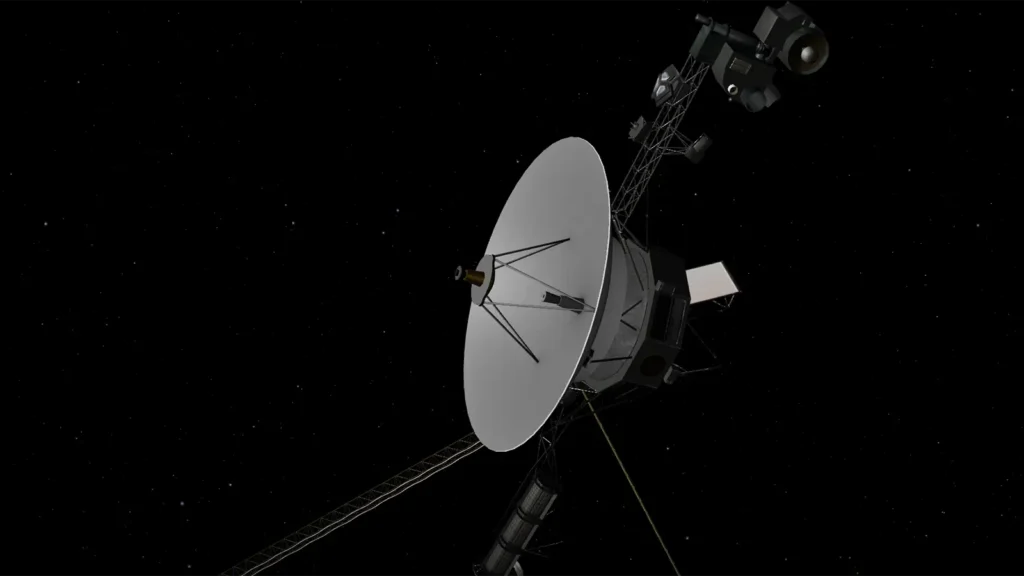What was the Voyager Program?

The Voyager program, initiated by NASA in the 1970s, stands as one of the most ambitious and successful space exploration endeavors in history. Originally conceived as part of the Mariner Jupiter-Saturn program, it evolved into a broader mission to explore not just Jupiter and Saturn but also the farthest reaches of our solar system and beyond. Managed by NASA‘s Jet Propulsion Laboratory (JPL), the program involves two spacecraft—Voyager 1 and Voyager 2 –which were launched in 1977.
The mission’s significance stems not only from its groundbreaking planetary encounters but also from its role in humanity’s first steps into interstellar space. The Voyagers have gone farther than any other human-made objects, continuing to transmit data from beyond the solar system, transforming our understanding of the cosmos.
Purpose of the Voyager Program
The Voyager program was primarily designed to take advantage of a rare Planetary Grand Tour, an alignment of the outer planets that occurs approximately once every 176 years. This alignment enabled the spacecraft to perform gravitational assists—using the gravity of one planet to accelerate toward the next—allowing efficient exploration of multiple planets.
The goals of the program included:

Close-up exploration of Jupiter and Saturn, along with their moons, magnetic fields, and ring systems.
Extended missions that allowed Voyager 2 to continue on to Uranus and Neptune, providing the only close-up views of these planets to date.
Collection of data about the heliosphere, the vast bubble of space influenced by solar wind, and the eventual entry into the interstellar medium (ISM).
Voyager 1 and Voyager 2:
Voyager 1 and 2 were launched in the same year, 1977, but on slightly different trajectories. These twin spacecraft were designed to conduct flybys of the outer planets, although their journeys diverged after completing their primary missions.

Voyager 1, launched on September 5, 1977, first explored Jupiter and Saturn before its trajectory took it on a path out of the solar system.

Voyager 2, launched earlier on August 20, 1977, followed a more elongated path that allowed it to visit Uranus and Neptune, making it the only spacecraft to have done so.
Both spacecraft are now in extended missions, known as the Voyager Interstellar Mission (VIM), with their primary objective being the exploration of the boundaries of the heliosphere and the transition to interstellar space.
Voyager Interstellar Mission (VIM)?
- Voyager Interstellar Mission (VIM):
After the successful completion of the primary planetary exploration objectives, both spacecraft continued on their journeys, and the mission transitioned into the Voyager Interstellar Mission. This extended mission aims to explore the outermost edges of the solar system and enter the interstellar medium (ISM). The primary goal of the VIM is to study the boundary of the heliosphere—the heliopause—and the conditions in interstellar space beyond the Sun’s influence.- Voyager 1 entered the interstellar medium in August 2012.
- Voyager 2 followed in November 2018.
In summary, the Voyager Mission refers to the original mission of planetary exploration, while the Voyager Interstellar Mission refers to the extended mission that began after the planetary flybys, focusing on the exploration of interstellar space.
Specifications of the Voyagers
The spacecrafts were built with durability in mind, designed to withstand the harsh environment of deep space for decades. Some of their key specifications include:
- Weight: Approximately 825 kg (1,820 lbs) per spacecraft.
- Power source: Both spacecraft are powered by radioisotope thermoelectric generators (RTGs), which use the heat from radioactive decay to generate electricity. The RTGs are designed to last for decades, though power levels gradually decline.
- Communication: The spacecraft communicate with Earth via the Deep Space Network (DSN). Despite their vast distances from Earth, they continue to transmit data using their high-gain antennas.
- Scientific instruments: Each Voyager carries 10 instruments, including cameras, magnetometers, plasma detectors, cosmic ray detectors, and ultraviolet spectrometers, which have been used to study the planets, their atmospheres, and interplanetary space.
Achievements of the Program
This program has made numerous groundbreaking contributions to space exploration, many of which were beyond its initial goals. Here are the major achievements:

Exploration of Jupiter and Its Moons:
The Voyagers provided the first detailed images of Jupiter’s atmosphere, including its famous Great Red Spot, a massive storm.
The mission also discovered volcanic activity on Io, the first observation of active volcanoes outside Earth.
Saturn’s Rings and Moons:
The spacecraft delivered detailed images of Saturn’s rings, revealing gaps like the Cassini Division.
The missions also explored the moons, including Titan, where data hinted at the presence of a dense atmosphere, and Enceladus, where icy plumes were detected.
First and Only Flybys of Uranus and Neptune:
Voyager 2 is the only spacecraft to visit Uranus and Neptune. It discovered Uranus’ tilted magnetic field and captured images of its many moons.
At Neptune, Voyager 2 uncovered the Great Dark Spot, a storm similar to Jupiter’s Great Red Spot, and detected supersonic winds on the planet.
Voyagers Enter Interstellar Space:
Voyager 1 became the first human-made object to enter the interstellar medium (ISM) in 2012, followed by Voyager 2 in 2018. These milestones allowed scientists to study the environment outside the influence of the Sun for the first time.
Confirmation of the Hydrogen Wall:
The Voyagers provided evidence of the existence of a “hydrogen wall” at the boundary of the solar system. This region, where the solar wind slows and interstellar gas accumulates, was a long-theorized concept that the Voyagers confirmed.
Discovery of New Moons and Rings:
The missions uncovered several previously unknown moons and faint rings around the outer planets, enriching our understanding of the dynamic processes at work in our solar system.
The Golden Record:
Each Voyager carries a Golden Record, a time capsule with sounds, images, and messages from Earth, intended for any intelligent extraterrestrial life that might encounter the spacecraft. This represents humanity’s symbolic attempt to communicate with the cosmos.
These achievements demonstrate the far-reaching impact of the Voyager program, not just in exploring the outer planets but in advancing our understanding of the heliosphere, the interstellar medium, and the very boundaries of our solar system. The Voyager spacecraft continue to operate, even after over four decades, sending valuable data back to Earth from distances that no other mission has reached.
Details in the Articles are collected from trusted Sources you can visit Wikipedia and NASA for more details.

Nice keep it down also you have a hidden talent so show it to the peoples!
Thanks for your Compliment!